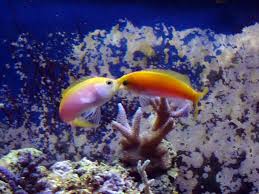The Dragon in Classical Myths and Legends of Ancient China

The dragon is one of the most prominent and revered symbols in Chinese culture, deeply embedded in its mythology, history, and traditions. In classical Chinese myths and legends, the dragon is often depicted as a powerful, mystical creature that embodies a range of virtues, including strength, wisdom, and good fortune. This majestic creature is not merely a symbol of physical might; it represents harmony between heaven and earth, and the interconnection of humans with nature. This article explores the role of the dragon in classical Chinese mythology, tracing its origins and significance across various legendary tales.
The Mythical Origins of the Chinese Dragon
The origins of the Chinese dragon are shrouded in mystery and have evolved over thousands of years. In early Chinese myths, the dragon was considered a divine and cosmic force. Unlike the fearsome, destructive dragons of Western mythology, the Chinese dragon is typically seen as a benevolent and protective entity, often associated with water, weather, and fertility. According to ancient Chinese legends, the dragon was not just a mythical creature but a symbolic representation of nature’s forces and the emperor’s power.
One of the earliest depictions of dragons can be found in the Shan Hai Jing (Classic of Mountains and Seas), a compilation of ancient Chinese myths and geographical knowledge. In these texts, dragons are described as multi-headed serpentine beings who control the elements and can traverse between the heavens, earth, and sea. They are depicted as powerful and mystical beings that played a role in maintaining the balance of nature and society.
The Dragon as a Symbol of Imperial Power
One of the most significant roles of the dragon in Chinese mythology is its connection to the emperor. The emperor of China was often referred to as the “Son of Heaven,” and the dragon symbolized the emperor’s divine authority and mandate to rule. It is believed that the dragon’s connection to imperial power can be traced back to the ancient legend of the Yellow Emperor, Huangdi, who was said to have descended from a dragon.
In the myth of Fuxi and Nuwa, the two legendary figures who are credited with creating humanity, dragons also play a central role. Fuxi, the primordial ruler of the earth, is often depicted with the features of a dragon, symbolizing his connection to the divine and his power over the natural world. Similarly, Nuwa, the goddess of creation, is sometimes shown with the body of a serpent or dragon, representing her power in shaping the universe.
The dragon was later adopted as a central motif in the imperial insignia of the Chinese emperors. It appeared on royal robes, thrones, and other symbols of authority, signifying that the ruler was the chosen representative of the heavens, entrusted with the protection of the people and the maintenance of cosmic order.
The Dragon and the Myth of the Five Emperors
In the classic myth of the Five Emperors (Wu Di), five legendary rulers emerged to restore peace and order to ancient China. These emperors, who were credited with introducing civilization, each had a unique connection to the dragon.
The most famous among them is the Yellow Emperor, Huangdi, who is often associated with the founding of Chinese civilization. According to legend, the Yellow Emperor ascended to the throne with the assistance of a dragon, symbolizing his connection to divine power and the heavens. This dragon served as his protector, guiding him through his conquests and battles, and ensuring that he would be successful in his reign.
The dragon in this myth represents not only power and strength but also wisdom and foresight. As the myth goes, Huangdi’s connection to the dragon gave him insight into the natural world, allowing him to rule with justice and benevolence.
The Dragon Gate and the Carp’s Transformation
One of the most beloved legends involving a dragon is the myth of the Dragon Gate and the carp’s transformation. This story tells of a carp that swam up the turbulent Yellow River and leaped over the Dragon Gate waterfall. After overcoming this formidable challenge, the carp was transformed into a dragon.
This myth is symbolic of perseverance, ambition, and transformation. The carp’s journey to become a dragon is often interpreted as a metaphor for personal growth and the achievement of greatness. In traditional Chinese culture, it is said that those who demonstrate determination and courage can reach their highest potential, just as the carp transforms into a majestic dragon. This myth has inspired many generations and is frequently used as an allegory for success in Chinese education and self-improvement.
The Dragon and the Creation of the Chinese Calendar
In some ancient Chinese myths, the dragon is also linked to the creation of the Chinese lunar calendar. According to one myth, the Jade Emperor, ruler of heaven, invited various animals to a race to determine the order of the Chinese zodiac. The dragon, a celestial being capable of flying through the skies, was one of the contestants.
Although the dragon was faster and more powerful than most animals, it paused during the race to help a group of people who were caught in a flood, demonstrating its benevolent nature. This act of kindness cost the dragon its position in the race, but it was still rewarded with the position of the fifth animal in the Chinese zodiac—after the tiger, rabbit, and others.
The dragon’s role in this myth emphasizes its divine and protective qualities, showing that power is not only about speed or strength but also about caring for others and upholding moral integrity. This lesson is deeply embedded in Chinese culture and is part of the reason why the dragon is revered not just as a symbol of strength but also as a symbol of kindness and responsibility.
The Dragon in Taoism and Immortality
In Taoist traditions, the dragon is often associated with immortality and the quest for spiritual enlightenment. The dragon symbolizes the balance of yin and yang, representing the integration of opposites and the cycle of life, death, and rebirth. It is also connected to the concept of Qi (life force or energy), as the dragon is believed to control the flow of vital energy through the cosmos.
One of the most well-known Taoist myths involving a dragon is the story of the Eight Immortals and their interaction with a dragon that guarded a sacred elixir of immortality. In the myth, the immortals trick the dragon and gain access to the elixir, which allows them to achieve eternal life. This tale speaks to the Taoist desire to transcend the physical limitations of the human body and attain spiritual enlightenment.
Conclusion
The dragon in Chinese mythology is far more than just a legendary creature; it is a symbol of divine power, wisdom, and transformation. From its role as a protector of the empire to its association with immortality and cosmic balance, the dragon remains an essential figure in Chinese culture. Its myths and legends have shaped Chinese history, philosophy, and art, leaving an indelible mark on the imagination of generations. As we explore the tales of ancient dragons, we are reminded of their enduring significance, not only as mystical beings but as symbols of the virtues that define Chinese civilization: strength, perseverance, wisdom, and benevolence.

